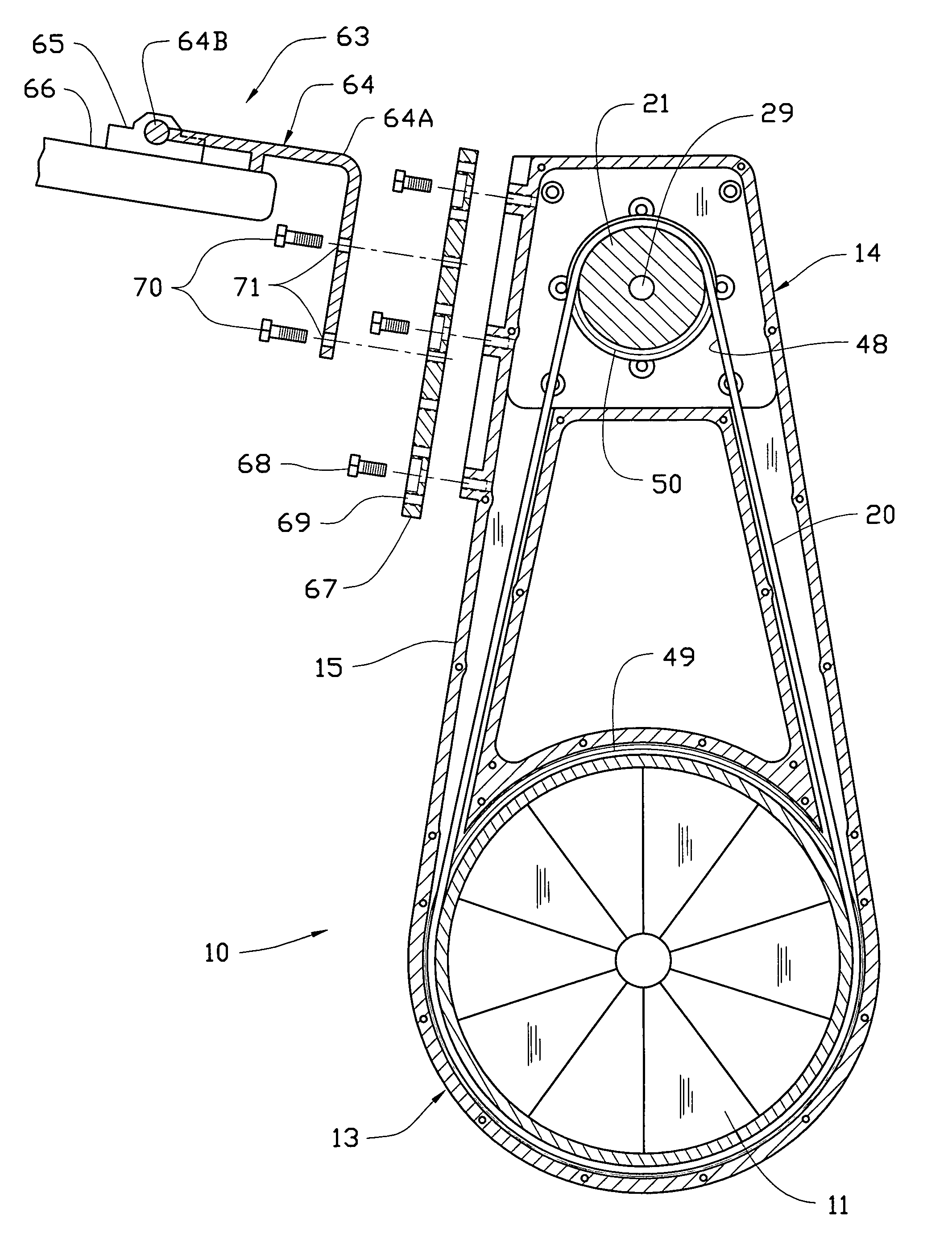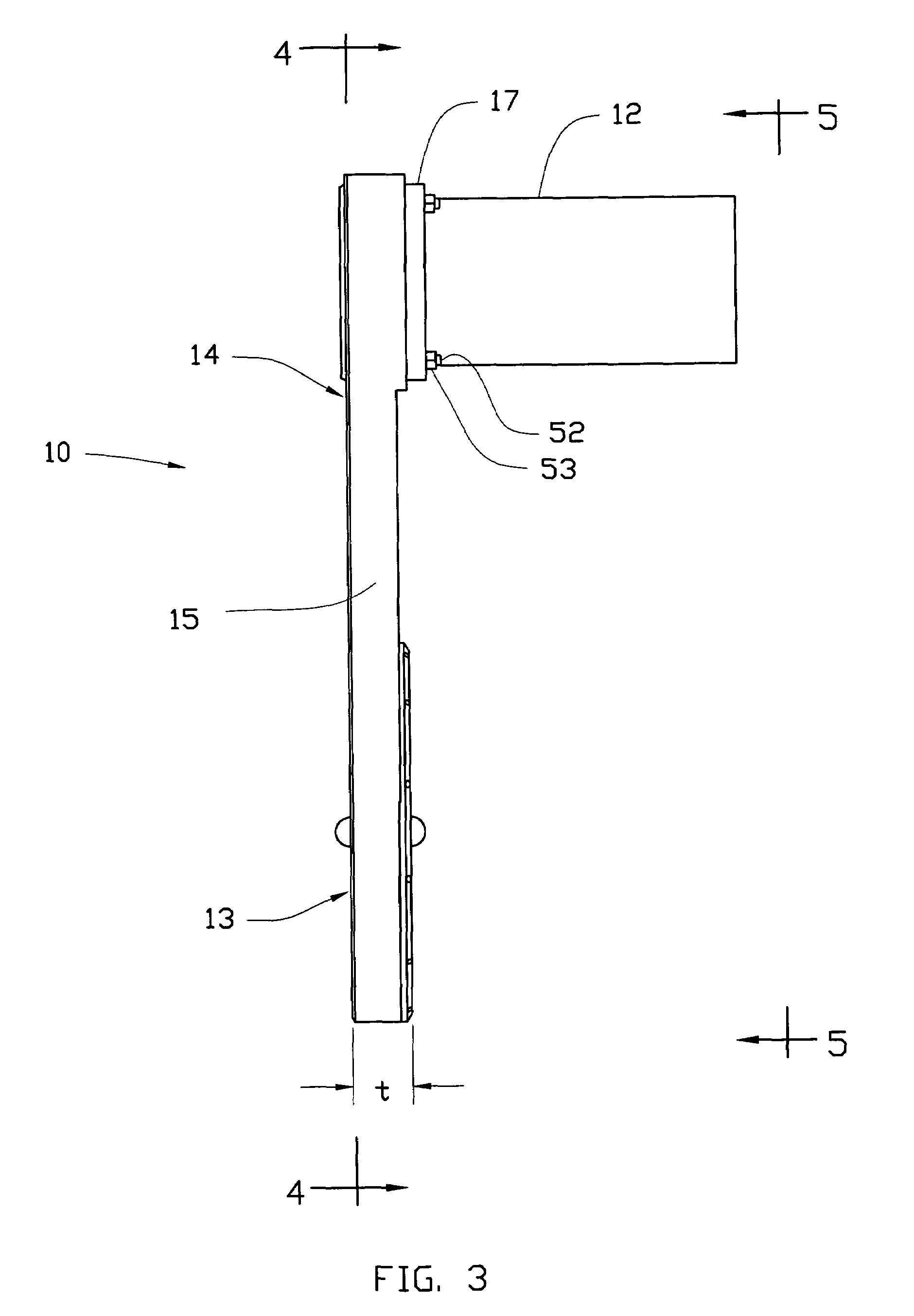The maneuvering of a vessel in close quarters as during docking and undocking is often challenging using only the vessel's main propulsion and steering systems.
It is especially difficult for those vessels equipped with an inboard engine with a single screw propulsion
system and steered by an ordinary
rudder.
In most cases, the rudders are configured for optimum performance within the structurally acceptable limits for the maximum
operating speed intended for the vessel, and as a result, are often insufficient for adequate
steering control at slow speeds.
The problem is compounded by the presence of a
paddle-wheel phenomenon pronouncedly noticeable with such inboard single screw vessels, wherein the prop-wash created by the rotating propeller generates a swirling movement in the water below the
hull to cause the
stern of the vessel to drift sideways.
The
steering control at slow speeds may prove further challenging if there are any prevailing wind or current conditions which may cause the bow and / or
stern of the vessel to veer off from the intended course in an unpredictable manner.
However, piloting even these types of vessels in close quarters, especially the larger of these, many be challenging to all but the most experienced helmsmen, especially with presence of unfavorable wind and / or current conditions.
There are many problems associated with an internally mounted bow or stern thruster
system.
First, these are costly to install.
However, the complexity and the cost involved with the installation of such are beyond the means of most pleasure vessel owners, and therefore, the use and the benefits of these devices are generally reserved only for the larger and expensive pleasure yachts or commercial vessels.
Second, the installation of the internal thruster unit potentially risks the degradation in the
structural integrity in the bow and / or stern sections of the vessel.
The weakened structure may develop a failure as a result of navigating through the rough waters or from light bumps or collision with other vessels or the dock structure which otherwise may have been non-detrimental to a
hull which had not been so modified.
Third, a structural crack or any failure in the below-the-
waterline seal joint, including those seal joints integral to the thruster unit mechanism, will results in the water
ingestion aboard the vessel.
The leakage aboard may take place while the operator is unaware, and if the rate of such leakage is greater than the rate at which the vessel's overboard pump
system is able to
discharge overboard the vessel may sink.
Fourth, the ducting will incur marine growth and, unless costly maintenance is performed regularly, result in reduced performance of the thruster system.
The access to clean the interior of the ducting and the gearbox portion of the drive unit within the ducting is difficult, because the
accessibility thereto is inhibited by the propeller(s) and the narrowness of the passageway within the ducting.
For similar reasons, the maintenance repair is costly.
Fifth, because holes are created on both sides of the bow due to the ducting, the hydrodynamic effects reacting against the discontinuous surfaces on either side of the
hull will generate resistance, and thus reduces the operating efficiency of the vessel.
Finally, yet importantly, the internally mounted system detracts from a valuable and limited
usable onboard space within the hull.
However, both of these devices still have the disadvantages of costly hull modification and installation, possible reduction in the
structural integrity of the hull, and mechanical complexity resulting from the incorporation of the retracting system.
However, the drawback of the Roestenberg is mechanical complexity and delicate nature of the pivotal retracting mechanism, which may easily incur damage while the vessel is navigating through rough waters.
However, the Pinsof's stern thruster has a
disadvantage of mechanical complexity associated with the linear or rotary deployment and retracting mechanism employed thereby.
While Wardell, Van Breems, Roestenberg, and Pinsof all cite the advantages of incorporating retractability feature to their thruster systems, it is noted that there are also disadvantages associated with the same.
A sustained dry operation of the thruster while the thruster unit is out of the water may lead to premature failures of the
drive shaft seal(s) or the motor.
In addition, the operator must retract the thruster unit out of the water prior to commencing high-speed
cruise, or the
hydrodynamic forces may cause damages to the drive unit and its support structure.
However, incorporating such safety features will increase complexity and cost and decrease the overall reliability of the thruster system.
 Login to View More
Login to View More  Login to View More
Login to View More 


